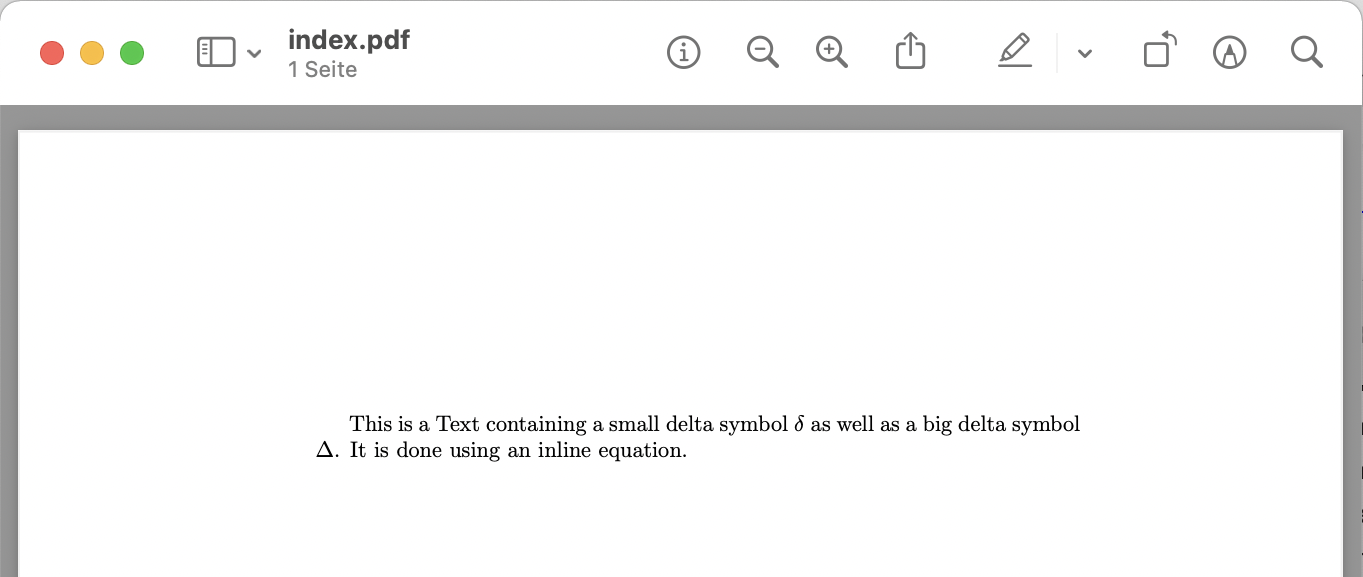How to Insert a Delta Symbol (Δ,𝛿) in LaTeX and other Apps
| LaTeX: | $\delta$ or $\Delta$ |
| HTML: | δ |
| Unicode: | U+03B4 |
You can write a small delta in a LaTeX document by using \(\delta \) or $\delta$. For a capital delta (Δ) you have to write \(\Delta \) or $\Delta$.
\documentclass{article}
\begin{document}
This is a Text containing a small delta symbol $\delta$ as well as a
big delta symbol $\Delta$. It is done using an inline equation.
\end{document}
In addition to inline usage, Delta symbols are quite commonly used in equation or math environments. For example, to display the Greek Delta symbol in a fraction on its own line, LaTeX provides simple and intuitive formatting capabilities:
\documentclass{article}
\begin{document}
The difference of variable y can be demonstrated as:
\begin{equation}
\frac{\Delta y}{\Delta x}
\end{equation}
\end{document}When the above LaTeX code is compiled, it creates a centered mathematical fraction on its own line with the denominator Δx and numerator Δy.
LaTeX also provides a lot of flexibility when it comes to typesetting mathematical functions involving Greek symbols. Let's say, we want to represent a function that uses both uppercase and lowercase Delta symbols. LaTeX offers an elegant way of handling this:
\documentclass{article}
\begin{document}
The function can be interpreted as:
\begin{equation}
f(\delta) = \Delta * \sin(\delta)
\end{equation}
\end{document}When compiled, this creates a centered equation on its own line that demonstrates a function of delta.
